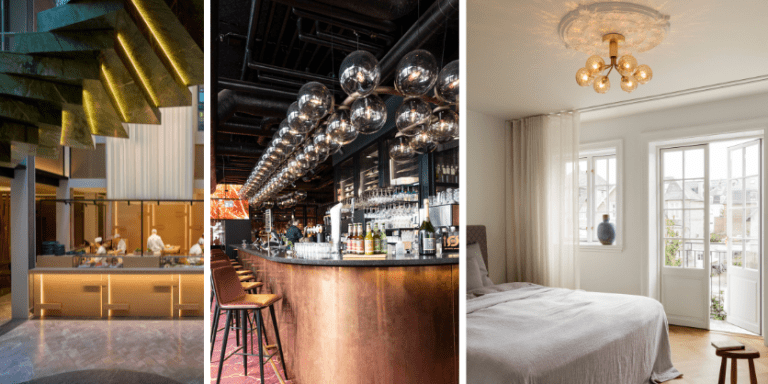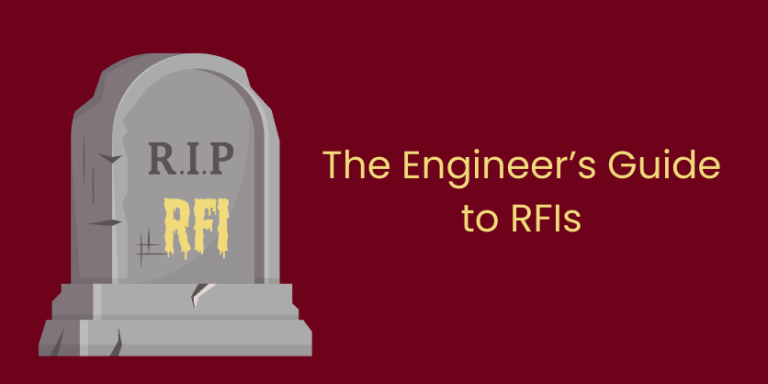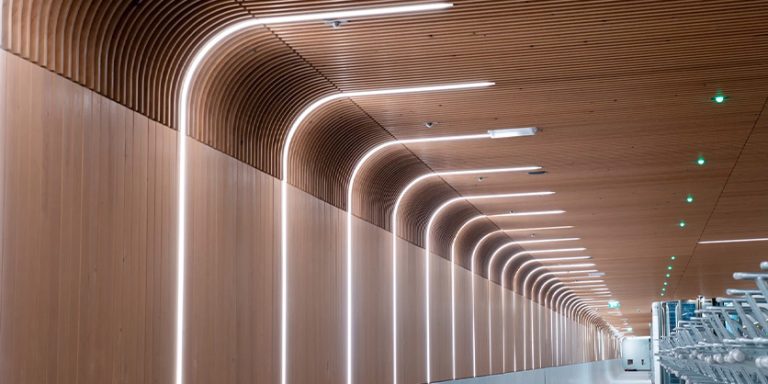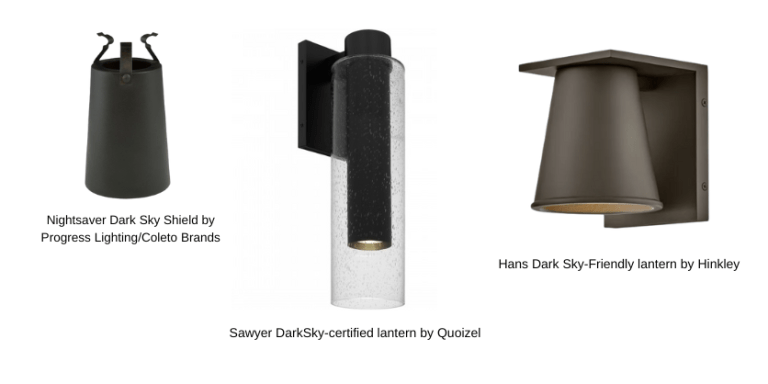The Art and Hardware of Lighting: Finding Beauty in Function

By Robert Lanteigne
As we reach the final chapter of The Non-Technical Language of Light, it’s time to delve into the fascinating world of lighting hardware. Throughout different chapters of this series, we’ve explored how lighting shapes our experiences, moods, and the very essence of the spaces we inhabit. But what about the physical elements that make this magic possible? In this article, we’ll explore the various types of lighting hardware- technical, aesthetic, and artistic that play a pivotal role in creating the luminous environments we cherish.
From the practical track lights and recessed fixtures to the grandeur of chandeliers and the subtle charm of sconces, we’ll uncover the function and artistry behind each. This exploration will show you how these different elements work together, not just to light a space, but to add character and style.
Track Lights: Versatility on a Rail
Track lighting is like the Swiss Army knife of lighting hardware. It consists of several light fixtures attached to a continuous track system mounted on the ceiling, floor, or wall. The beauty of track lighting lies in its flexibility. The individual lights, or “heads,” can be moved along the track, tilted, and directed as needed.
Track lighting is ideal for spaces where lighting needs to change often or when you want to highlight specific areas or objects. For example, in an art gallery, track lights can be repositioned to focus on different pieces. In a home, they might illuminate countertops one day and a reading nook the next. The sleek, minimalist design makes track lighting a favorite for modern and industrial interiors, where functionality and style go hand-in-hand.

Recessed Lights: The Invisible Light Source
Recessed lighting, often referred to as “can lights” or “downlights,” is installed into the ceiling, providing a clean, streamlined appearance. These fixtures are embedded so that they don’t protrude into the room, which is perfect for spaces with low ceilings or a minimalist aesthetic.
Recessed lights can be used to create general lighting, accent lighting, or even task lighting, depending on the type of bulb and the direction in which they are angled. For instance, recessed lights placed around the perimeter of a room can create a soft, ambient glow, while those aimed at a kitchen counter can provide the bright, focused light needed for meal prep. The new generations are unobtrusive, making them ideal for small spaces or when you want the room’s architecture or decor to take center stage.
Suspended Lights: Making a Statement
Suspended lights, also known as pendant lights, are fixtures that hang from the ceiling, usually by a cord, chain, or rod. They are versatile and come in various shapes, sizes, and styles, from sleek and modern to ornate and classic. Suspended lights are perfect for adding a focal point to a room, such as over a kitchen island, dining table, or in an entryway.
These lights offer both functional illumination and an opportunity for artistic expression. Imagine a row of sleek, industrial pendants casting warm light over a long dining table, or a single, dramatic fixture creating a statement in an otherwise understated room. Suspended lights are the jewels of the lighting world, catching the eye and drawing attention to the space they inhabit.
Sconces: Elegant Wall Lighting
Wall sconces are mounted on walls and can provide both ambient and accent lighting. They can direct light upwards, downwards, or both, depending on the design. Sconces are excellent for adding layers of light to a room — they can flank a mirror in a bathroom, illuminate a hallway, or create cozy reading nooks.
With their wide range of styles, from antique brass fixtures to modern minimalist designs, sconces serve as both functional light sources and decorative elements. They are perfect for spaces where floor and ceiling lighting options are limited, and they can add a sense of intimacy or drama to a space, depending on their placement and design.

Flush Mounted Lights: Compact and Practical
Flush-mounted lights are fixtures that sit directly against the ceiling, making them ideal for rooms with low ceilings or for spaces where a minimalist look is desired. They provide general illumination and are often used in hallways, closets, or bathrooms where the ceiling height does not allow for hanging fixtures.
Despite their compact design, flush-mounted lights come in a variety of styles, from simple and utilitarian to more decorative options featuring glass or metal elements. They offer a subtle way to light a space without drawing too much attention to the fixture itself, allowing the room’s other elements to shine.
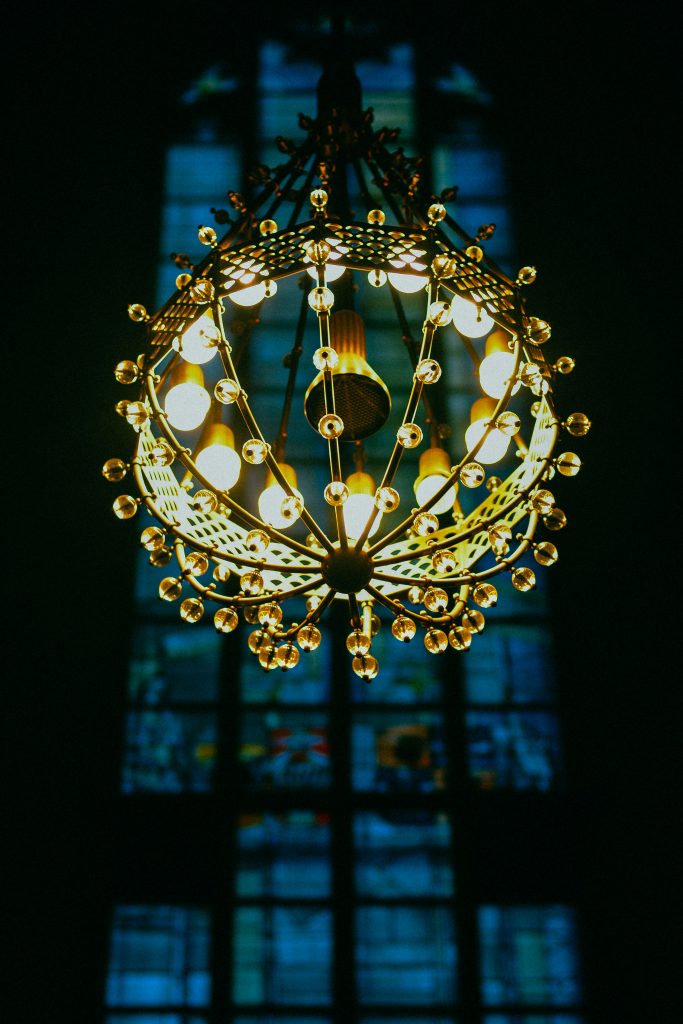
Chandeliers: The Grand Illuminators
Chandeliers are the epitome of decorative lighting. They are suspended fixtures designed to make a statement, often incorporating multiple branches, lights, and materials like crystal, glass, or metal. Chandeliers are commonly associated with grand dining rooms, entryways, or formal living spaces where their visual impact can be fully appreciated.
While traditional chandeliers are ornate and elegant, modern interpretations can be sleek and minimalist, combining unexpected materials like wood or recycled glass. Chandeliers not only provide general lighting but also act as a sculptural element in the room. They command attention and elevate the design of any space.
Floor Lamps: Mobile and Multi-functional
Floor lamps are free-standing light fixtures that can be moved around easily, making them versatile additions to any room. They come in a range of styles, from the classic torchiere, which directs light upwards to create soft ambient light, to task-oriented arc lamps, which provide focused light for reading or working.
Floor lamps are perfect for living rooms, bedrooms, or offices, where they can fill dark corners or provide task lighting next to a sofa or desk. With their diverse designs and adjustable features, floor lamps can add both function and style to a room, enhancing its comfort and aesthetics.
Table Lamps: Small but Mighty
Table lamps are perhaps the most common form of portable lighting. They sit on tables, desks, or bedside stands and provide localized light. Table lamps come in an endless variety of designs, from classic to contemporary, making them a versatile addition to any room.
These lamps can be functional, such as a task lamp on a study desk, or purely decorative, adding a splash of color or a unique shape to a side table. They are excellent for adding warmth and character to a room while providing additional light exactly where it’s needed.
Linear Lighting: The Sleek Illuminators
Linear lighting refers to fixtures that consist of a continuous strip of LED lights, often housed in a slim profile that can be mounted under cabinets, along staircases, or around architectural features. This type of lighting is ideal for providing both task and accent lighting in a clean, modern style.
Linear lighting is especially popular in kitchens, where it can be installed under cabinets to illuminate countertops, or in office spaces, where it provides even illumination across work surfaces. The minimalist design allows it to blend seamlessly into the background while providing efficient, high-quality light.

Cove Lighting: Subtle and Sophisticated
Cove lighting is a type of indirect lighting that is installed in a recessed area, such as a ledge, shelf, or valance. It directs light upward or downward along the walls, creating a soft, diffused glow that enhances the architectural features of a space.
Cove lighting is often used to add a sense of depth and dimension to a room. It can create a warm, welcoming atmosphere in a living room or a sophisticated ambiance in a restaurant or hotel lobby. By concealing the light source, cove lighting creates an elegant and subtle effect, highlighting the room’s design without overpowering it.
Lighting as Art: Where Function Meets Aesthetic
While all the types of lighting we’ve discussed so far serve specific functions, they also contribute to the aesthetic and artistic qualities of a space. Lighting can be more than just a utility — it can be an expression of creativity and style.
Consider artistic light fixtures, such as sculptural pieces that double as artwork, or custom-made installations designed to complement a room’s unique character. These pieces can be bold and eye-catching, like a chandelier crafted from recycled materials, or delicate and intricate, like a glass pendant light resembling a flower.
Artistic lighting fixtures push the boundaries of design, often incorporating unexpected shapes, materials, and colors to create a visual statement. They serve both a practical purpose and an artistic one, enhancing the beauty of a space while providing light.

Conclusion: Illuminating Your World with Purpose and Beauty
The Non-Technical Language of Light has been a journey to demystify lighting for everyone, regardless of background or expertise. Our mission has been to build a shared vocabulary that allows people to communicate their lighting needs effectively, whether you’re an architect, a designer, or just someone wanting to create a cozy nook at home.
Lighting is not just about function; it’s about creating moods, enhancing beauty, and bringing spaces to life. As we’ve seen in this article, understanding lighting hardware is key to mastering both the technical and aesthetic aspects of lighting design. Whether it’s the versatility of track lighting, the understated elegance of recessed lights, or the bold statement of a chandelier, each fixture has a role to play in crafting the perfect environment.
So, as you go forward, remember that lighting is an art form. It’s about more than just turning on a light — it’s about illuminating your world with intention, style, and creativity. May your spaces always be filled with the perfect glow, reflecting both your needs and your unique personality.
As we’ve mastered the art of communicating lighting indoors with The Non-Technical Language of Light, our next adventure takes us outside! In the new series, we’ll explore how lighting transforms gardens, patios, and architectural facades into enchanting nighttime spaces. Outdoor lighting isn’t just functional it creates ambiance, highlights beauty, and brings spaces to life after dark. Join us as we continue to illuminate the world, making outdoor lighting simple and inspiring for everyone!
About the Author

Robert Lanteigne AKA Lightbob is a successful entrepreneur, born in Canada, established in the United States, business consultant, coach, chef, electrician and mentor with decades of experience in lighting design and creative coaching. He is the founder and CEO of Lightbob.com, a premier lighting design company that provides services worldwide, and RobertLanteigneCoach.com is a high-level coaching service that offers creative solutions to specialized consultants looking to expand their practice.
Through his coaching services, Bob provides expert guidance and support to consultants who want to take their practice to the next level.
Whether they are looking to increase their revenue, expand their client base, or develop new skills, and offer personalized coaching programs that are tailored to the unique needs and goals of each client. Bob’s expertise in lighting design and creative coaching has earned him a reputation as a leading expert in both fields. His work has been featured in numerous publications, including Architectural Digest, Interior Design, and Trade Magazines, and has been a guest speaker at industry events around the world. Bob is also a past member of several professional organizations, including the International Association of Lighting Designers. More information about Lightbob
Other Articles from Robert Lanteigne
Brightening Up Your Home: The Magic of Different Layers of Lights – US Lighting Trends
Simplifying Lighting Controls for Everyday Use – US Lighting Trends
Introduction to Lighting Colors and Their Impact – US Lighting Trends
Illuminating Spaces: Understanding the 3 Sub-Effects of Directional Lighting – US Lighting Trends


